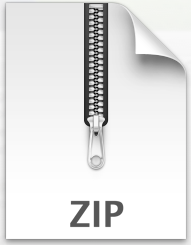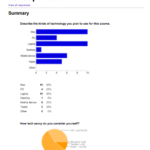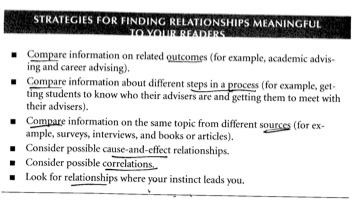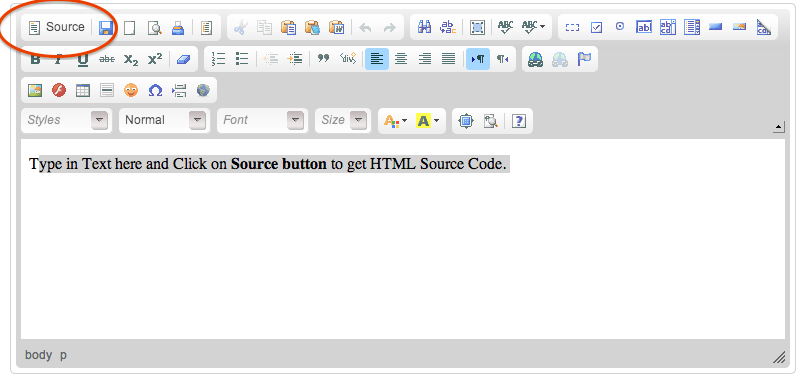Here’s a zip file of all the Audience Analysis documents your groups sent to the class via email last night.
Tag Archives: surveys
Class-wide survey data
Below is the summary of responses from the initial survey I sent out before our first meeting. Feel free to refer to this in your memos or to draw from it when you propose tech briefing ideas.
T, 9/9: Audience Analysis (data)
Today we are aiming to get through 3 tasks and start a 4th, all dependent on your surveys. Remember, we are meeting in HBC 227 today!
1. Take surveys. Below you’ll see links to each group’s survey. Sign in to one of the computers in the cluster or use your own to take every survey, including your own. This should take no longer than 20-25 min.
Links:
Group 1 (social media in the workplace): https://docs.google.com/forms/d/1pxsW2SBSygPKWS0fOxYq3BCbsmqpA0yuBlAfCUTt7Bs/viewform?usp=send_form
Group 2 (cloud-based options): https://docs.google.com/forms/d/1SB2EKIocQ8sqDQMiFVhDQHZU5tuabeFu0_RjyspVwGo/edit?usp=sharing
Group 3 (video conferencing): https://docs.google.com/forms/d/1U-R3ZSMvzmdCT_3tKWNFjj6kkGjzGl8lTxsk-LLhcdo/viewform?c=0&w=1&usp=mail_form_link
Group 4 (online collaboration sites/software): https://docs.google.com/forms/d/1gaV4LBsoGnfXImstIWPipzYzPbLAErdqRd5FwLlUvuw/viewform?c=0&w=1&usp=mail_form_link
Group 5 (web design): https://docs.google.com/forms/d/1b2eg8f89SvcXhpJbPmNuHdk0OmbuzHHb16cMe5lnYvs/viewform?usp=send_form
2. Process your data. Once everyone has taken all the surveys, work together with your group to view the “summary of responses” in Google Forms (to access this, go to the Form menu). Although the raw data is available in spreadsheet form, the bonus feature with Google Forms is that it will visualize the data with charts or diagrams. Look over this data with your group. It might help to look at Guideline 3 on p198 in Technical Communication. Specifically this table:
3. Interpret your data. As you discuss how to make sense of your data, make room for alternative explanations (p199) and uncertain conclusions (p200). Ultimately, consider how the patterns and possibilities will affect your readers’ upcoming decision: to propose a tech briefing to the class. Explain the significance of your data and entertain some recommendations based on this.
4. Draft a memo. Before next class, send the class a pdf of a memo that summarizes your survey results and makes recommendations, drawing from some of the methods discussed in Chapter 7. Use the format on pp 550-52 to help you design it. This memo should communicate key insights from your survey; that is, those that are most relevant to the next task: proposing a tech briefing project. As you do this, keep your audience in mind; you should ask yourselves: how could our data be useful to our peers as they consider drafting a TB proposal? This doesn’t mean you should ignore specifics (i.e. the data), but should think carefully about how your are ordering information in your memo. In fact, be sure to attach a pdf of the “summary of responses” — the visualized data — so the class can scrutinize your interpretations.
Th, 9/4: Survey design
Today we’re aiming to get through 5 main tasks:
1. Discuss feedback on your bios. I tried something a little different this time in responding to all of your bios in one file rather than sending them out individually. This way you can see comments on your own bio, but also those of your peers. (Note that I did not, of course, include grades in this document.) The document is stripped from all formatting, so I could respond to the text of your bio in the Word; but I did refer to the actual course site to see how you formatted your bios and if you included a picture. A few quick patterns I noticed about these bios:
- You all have a list of very interesting accolades. I was not so accomplished when I was your age. I’m really looking forward to building from and using these work experiences in our class this semester.
- They were well written at the sentence level. There were very few mechanical, spelling, or usage errors.
- Some folks did not include pictures of links, which felt like a lost opportunity.
- Some had trouble prioritizing information — putting the more important info first or writing their bios chronologically. That said, many of you were aware that you were trying to impress each other with the prof writing experiences you did have.
2. Go over the Tech Briefing (TB) requirements.
3. Learn how to make an effective survey. Here we’ll review key points from “Conducting a Survey” (from 188-193 in Anderson). Here’s a pdf of my keynote.
4. Learn about Google Forms. We’ll view a video from Google about Google Forms, and I’ll demo with a quick tutorial with the survey I made at the beginning of this course.
5. Practice designing surveys.
- As a large group: Let’s develop some categories, topics, niches, or other language for generalizing about kinds of technology that assists with either the writing process or the production of writing in the workplace. From this, let’s narrow it down to five key ones.
- In assigned groups: Create an effective survey using Google Forms. Be sure to email me your survey link before next class since I’ll be posting them here on the course site. Remember, this counts as part of your grade for the Audience Analysis assignment in the Onboarding unit.
Groups
|
Group |
1 |
2 |
3 |
4 |
5 |
|
Survey topic |
|||||
|
Kelly |
Anisha |
David |
Kalia |
Julia |
|
|
Audriana |
Alina |
Lexi |
Andrew |
Francisco |
|
|
Rachel |
Mark |
Tim |
Lucas |
Ethan |
|
|
Kathryn |
Hohon | Tian | Evan |
T, 8/26: Survey, Bios
Today you will do 3 things:
- Introduce yourselves and listen to an overview of the syllabus
- Discuss yourselves in relation to professional writing
- Begin drafting bios
1. Introduce yourselves
First, you will attempt two kinds of introductions, one more intimate and the other more aggregative; that is, after you spend time exchanging names, majors, and career plans, you will turn to the data you provided in your surveys. Before you do that, though, I’ll provide an overview of the syllabus.
2. Discuss yourselves in relation to professional writing
We’ll first take a minute to make sure everyone completed a survey. You’ll then look over Google’s response summary from the survey I sent you. With a partner, come up with some tentative answers to the following question:
What patterns do you notice with this dataset and what might they say about the experiences and goals of the members of this class, especially when it comes to professional writing?
Let’s also try to define professional writing and reflect on some of the ways you’ve already begun to learn how to write like one.
3. Begin drafting bios
At the top of this page, you’ll notice a Meet the Team link. At the moment, I’m the only person listed. While we can certainly use my bio as a template, I’d rather have us talk about what we’d like there (we should also acknowledge that writing these ain’t easy, as the Tweets to the right can attest).
As this Smashing Magazine article makes clear, the point of a team page is to establish credibility with outside audiences; however, since we don’t have any outside audiences, our goal is to establish credibility with each other — and to have some fun doing it. So let’s look at that article and review some of the basic trends, then develop our own criteria, which I’ll post on the course site.
If there’s time, you should begin drafting a bio using this TinyMCE editor. Once you have a draft, grab the html code by cutting and pasting the “Source” button (see image below). This is important as I will use the html to code our page on this course site.
Once you’re happy with your design (in class or not), grab the html by copying and pasting it into a new document that you’ll have access to class on Thursday. Also for Thursday, read “Chapter 3: Defining Your Communication’s Objectives: Purpose, Reader, Context” and pp 5-10 (“Characteristics of workplace writing”) in our textbook. In class, we’ll review the bios and watch and take notes on Helvetica (2007), considering how the film presents a rhetorical analysis of typeface.
Welcome to WRT 307
Hi folks,
My name is Jason (<— please call me this) and, assuming you’re in the right place, I’ll be your instructor for WRT 307-M220 this fall. Although I’m currently a TA, I directed SU’s Writing Center for six years before I decided to pursue a doctoral degree full time (I’m in my fourth year); hence, most of my professional writing experience stems from being an administrator at this large research university.
I’ll share more about myself in class on Tuesday, but for now I want to know more about you. Please take 3-5 minutes to complete a very brief survey. Responses will be anonymous, but serve as the foundation for one of our discussions next week. You can access the form below, or by using this link.
This is all I’m asking you to do before class on Tuesday, but feel free to explore this site in case you want to preview the course or start order materials. If you have questions about it, please feel free to get in touch.
Jason




